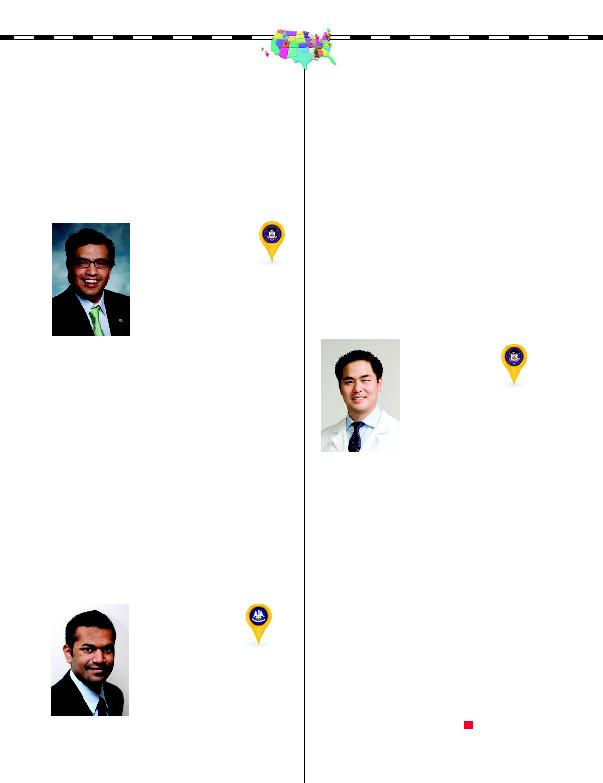
multiple practices, he is gaining experience in both public
and private settings, and with pediatric, adult, and elderly
patients, whether inpatient or outpatient, ill or healthy.
Women represent about 40 percent of the patients he sees.
Memorial Sloan Kettering
Cancer Center
oncology through his interest in
gram, he wrote his thesis on clinicopathological predic-
tors of breast cancer. He found that the field is intensely
research-oriented, and the highly productive Department
of Radiation Oncology proved to be an excellent match
for his interests.
only functioning hospital in lower Manhattan, Beth
Israel accepted the sickest patients from surrounding hos-
pitals while their medical staffs camped out and worked
together 24/7 for a week. "A great team-teaching experi-
ence," Dr. Taunk says.
different cancer sites in the body on 10-week rotations.
"Radiation is critical in the treatment of many cancers,"
he says, "and 50 percent of all cancer patients receive
radiation treatment."
Tulane Medical Center,
New Orleans
Johnson & Johnson, Dr. Vemula
surgery and chose to follow that path.
post-trauma reconstruction, to breast augmentation, to
face-lifts. "In plastics, you think outside the box, because
MacGyver, the TV detective with a creative solution to
every problem."
Center. "From day one," he says, "residents got hands-on
time according to their ability. The level of trust was phe-
nomenal." He received subspecialty training in surgical
oncology at Memorial Sloan Kettering Cancer Center, in
Shore University Medical Center, in Neptune Township.
In his last year at Monmouth, he served as chief resident.
Program, Neurological Institute
of New York/Columbia University
College of Physicians and
Surgeons
ate but didn't expect to become a neurosurgeon.
mer internship at Columbia, engaged in translational
research on drug delivery. The internship became a year-
long, grant-funded position. Dr. Yun's mentor at
Columbia was Jeffrey N. Bruce, MD '83, Edgar M.
Housepian Professor of Neurological Surgery, who is
also the director of the Neurological Surgery Residency
Program.
a popular specialty then," says Dr. Yun. "But great mentors
showed me that it was a realistic goal."
greater emphasis on neurosurgery. In addition to clinical
work and research, he instructs medical students; he is re-
sponsible for teaching students and residents about every-
thing from clinical assessments, to complex surgeries, to
the importance of linear thinking.
T
E
V
E
H
S
T
E
I
N
T
E
V
E
H
S
T
E
I
N